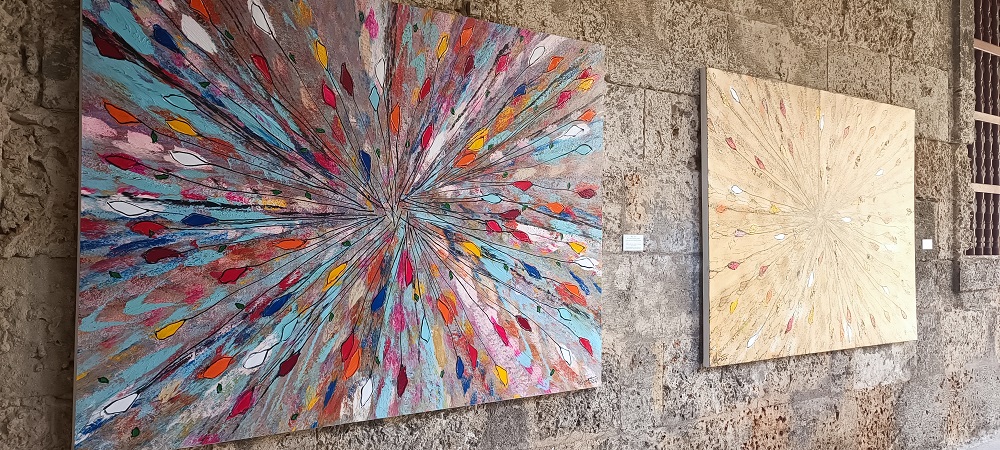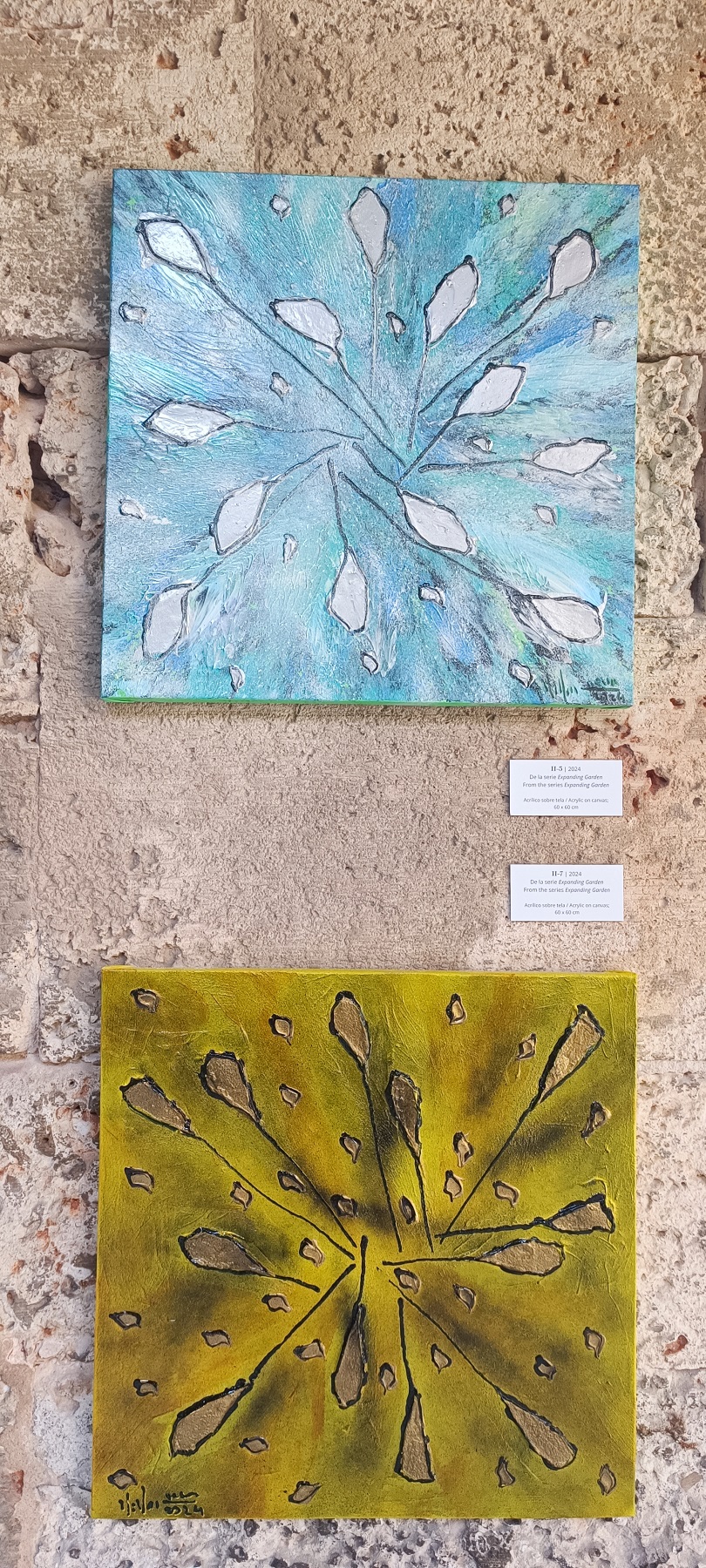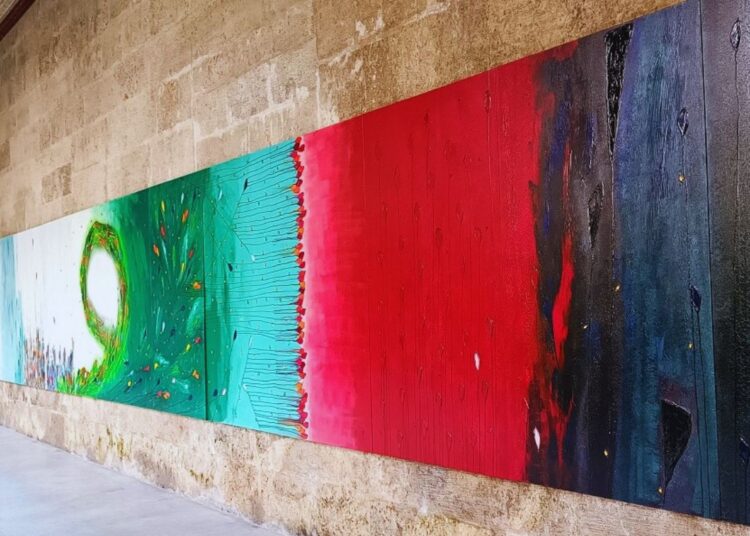Ernesto Villanueva (Havana, 1970) is participating in the 15th Havana Biennial (collateral exhibition) with what seems to be a new moment in his artistic production. Coming from geometric abstraction, with a slight previous foray into the figurative, in 2009 he inaugurated the long series Summer in My Garden, where he proposes to create a particular garden, a space of contemplation and exaltation, of meditation and exchange of feelings and ideas.
Those initial gardens inaugurated what was to be his representation strategy from then on, the metonymic approach to the subject. The garden (glimpsed? dreamed?) is never represented in its entirety in the works. A group of suggested flowers is arranged in the space in very different ways, under different lights and in a range that goes from cold to warm colors, in correspondence with the artist’s moods and the vicissitudes of his personal circumstances. The garden for the flowers, the whole for the part.

Regarding the genesis of this collection, Villanueva has said:
“Summer in My Garden has always been associated with the idea of a mental state directly linked to happiness. Drawing a parallel between those interior gardens found in the ancient cultures of India, China, and Japan, I see my gardens as a utopian space of happiness. The use of color in this series is contrived and does not seek to emulate nature. The shape of the supposed flower could not be said to be a specific flower; at most, a symbol.”
He was then dealing with interior, introspective, quiet, calm spaces…until the appearance, more or less recently, of Expanding Gardens, a collection driven by the Big Bang theory. According to this, the universe is in constant expansion. If the pieces in Summer… were animated by a certain centripetal force, now the dispersion is centrifugal. The gardens expand, break the interior relationship and try to grow from the center to the periphery.

Last Garden, Same Summer, a polyptych mural measuring 19.20 meters long by 1.90 meters high, is made up of 16 panels that, when the time comes, could be interpreted as independent works. Its name gives the exhibition its title, which includes other works from different periods that reflect the artist’s trajectory in the subject matter. It is located on one of the walls of the cloister of the Padre Félix Varela Cultural Centre (CCPFV), the former headquarters of the San Carlos and San Ambrosio Seminary, in the historic center of Havana.
As far as I remember, this is the first time that Villanueva’s gardens have been exhibited within the framework of a real garden, to which it is integrated like two mirrors facing each other: one reflects the other in successive multiplications. The columns of the building prevent the complete contemplation of the piece in perspective, which is why they induce one to walk through it, in a sort of very gratifying immersive practice. Someone asked me if I had seen Villanueva’s mural; I replied that I had walked through it. Father Yosvany Carvajal, parish priest of the Cathedral of Havana and rector of the CCPFV, in the words of the catalog, reminds us that “in a garden begins the history of humanity according to the story contained in the book of Genesis which, with its usual mythical-theological charge, wants to place the origins of everything that exists in that idyllic setting where the human being is in perfect harmony with nature, with his fellow men and above all with the Transcendent.”

Aside from this biblical consideration, we can conclude that the garden, real or imagined, is a non-negotiable bastion of personal freedom, the place where we are, far from the grievances of a contemporary world that is becoming more and more inhuman and aggressive, and vice versa.
I do not know if the “last” in the title of the splendid mural means a closure of the theme in the work of this artist. I think that all creation — in any of the arts — is a personal reconstruction of the physical world, but also a log of the feelings and desires of man in all times.
Last Summer, Same Garden is an exhibition worth visiting, among the most attractive options during these days of the Biennial.
Where: Padre Félix Varela Cultural Center. Tacón between Chacón and Empedrado, Old Havana.
When: Until February 23. Daily, 8:00 a.m. to 8:00 p.m.
How much: Free admission. For guided tours, contact Marielmy Valdovino: +53 5 343 72 06.











